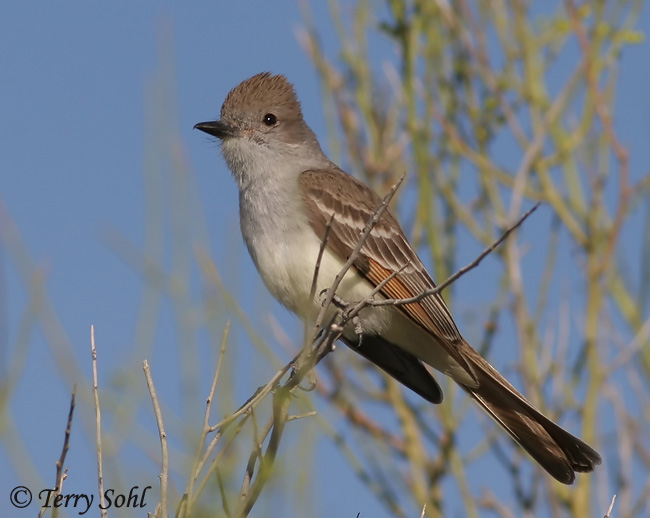Hello everyone!
In my last post, I talked about how noise pollution affected birds’ call quality and efficiency. To continue on with the same theme on noise pollution, I will explore more on noise pollution and its effect on birds’ reproduction.
Most of this post would be based on the study by Kleist et al., 2018 where they have been studying the effects of chronic anthropogenic noise on desert wildlife for years. Deserts are usually though of as remote and quiet places where you can probably only hear the wind. However, the boom in oil and gas activity has completely transformed this soundscape of the region. The aim of their study was to combine all of these factors to really pinpoint how noise impacts reproduction namely on bluebirds and ash-throated flycatcher.


Effect of noise on stress and fitness is complex. Noise can elicit stress response directly through extreme exposure or indirectly by changing interaction between animals and their environment. At lower exposure level, stress is likely to be elicited indirectly by increasing difficulty of coping with external challenges, like territory defense, or by creating anxiety through decreased detectability and predictability of threats. A study by Bunkley et al., 2017 found that desert areas with high anthropogenic noise had fewer crickets, froghoppers, grasshopper, and velvet ants. This suggest that birds nesting in such areas may have less food. Noise can also interfere with communication between adult bluebirds or drowning out the birdsong that alerts other about the presence of predators.
Based on results from their study, it was found that Western Bluebirds hatching success was significantly affected negatively by noise. One possible reason for reduction in hatch success is the increase distraction and vigilance or animals exposed in areas of higher levels of noise. Increased vigilance by females could lead to trade-off with incubation time which leads to fluctuations in nest temperature and reduced time. Other reasons could include breakdown in courtship and copulation, low-virility males in loud areas. More conclusive studies with regard to this is needed to better determine causes of reduced hatch rates in loud areas. However, regardless of the reason, this result already suggest that noise decreases fitness, hatching success of the Western Bluebird, a species known to be hardy to noise pollution.
The effect of noise on fitness may induce not only hatching failures but also reduced body condition of hatched chicks. Development and growth during the nestling stage is an important predictor of juvenile survival and thus acts as a useful surrogate to infer fitness potential in individuals exposed to noise. The results (Kleist et al., 2018) below shows that after reaching a certain threshold, feather length and body sized decreased drastically with increasing noise levels. High levels of noise could distract parents leading to increase vigilance but reduced provisioning efforts resulting in decreased body size. Smaller nestlings might have to face several consequences including, failure to return from migration, occupying low-quality habitat, and reduced reproductive success. Decreased feather development could also reduce ability to escape from predators.
High levels of noise could distract parents leading to increase vigilance but reduced provisioning efforts resulting in decreased body size. Smaller nestlings might have to face several consequences including, failure to return from migration, occupying low-quality habitat, and reduced reproductive success. Decreased feather development could also reduce ability to escape from predators.
Conditions at sites of this research are not unusally loud as compared with anthropogenic noise found in many areas across the United States, or globally. Clarifying the potential impacts of chronic anthropogenic noise exposure in wildlife is timely and very much needed, given the nearly ubiquitous presence of anthropogenic noise worldwide and the forecasted global rise in noise-producing infrastructure.
“We can’t assume that just because birds aren’t avoiding noise, that they aren’t paying a cost for staying put” – Chris McClure
What Chris McClure, an ornithologist and director of global conservation science for the Peregrine Fund, said on this study really hit me. We assume most of the time that if the birds exist, they have adapted and are probably living their best life yet we, most of the time, fail to see the consequences they have to bare as a result of all these noises on our part.
That brings me to the end of this post.
See you guys soon!
References
Bunkley, J. P., Mcclure, C. J., Kawahara, A. Y., Francis, C. D., & Barber, J. R. (2017). Anthropogenic noise changes arthropod abundances. Ecology and Evolution, 7(9), 2977-2985. doi:10.1002/ece3.2698
Kleist, N. J., Guralnick, R. P., Cruz, A., Lowry, C. A., & Francis, C. D. (2018). Chronic anthropogenic noise disrupts glucocorticoid signaling and has multiple effects on fitness in an avian community. Proceedings of the National Academy of Sciences, 115(4). doi:10.1073/pnas.1709200115








